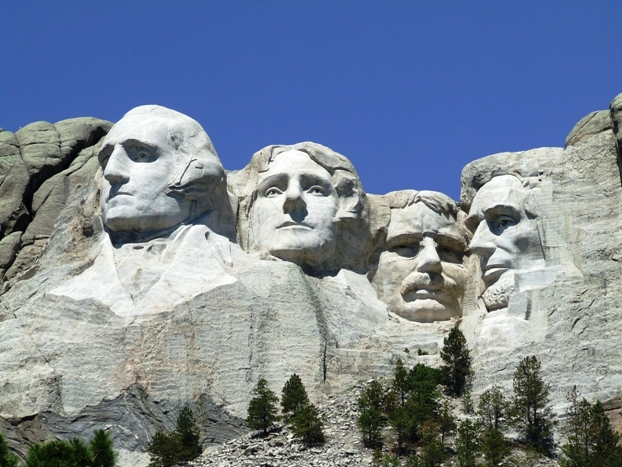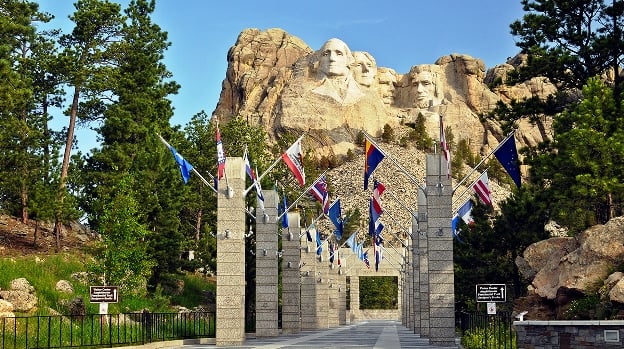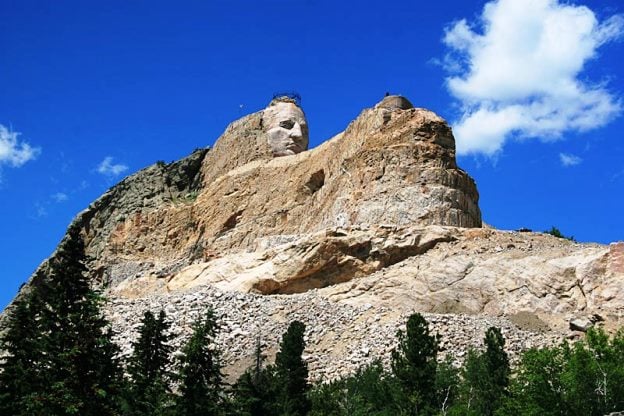For the generation that saw it born, Mount Rushmore was the symbol of American optimism after the triumph of WWI. For many who grew up in the 1950s and ’60s, it became a symbol of the family road trip. And for American Indians of any generation, it’s a complicated symbol of broken treaties and loss.

Conceived in 1924 by Danish-American sculptor Gutzon Borglum, the great sculptures on Rushmore were to be a ‘Shrine of Democracy’ that would use the presidents’ images to trace the country’s history, from its birth (Washington) through to its early growth (Jefferson), preservation (Lincoln) and robust development in the 20th century (Teddy Roosevelt). Work on the monument began on October 4, 1927, and ended 14 years later, on October 31, 1941. When the granite dust cleared, Rushmore had been transformed forever, with four enormous faces, six storeys high, peering into the Black Hills.

Though America hailed Borglum’s great achievement (completed by the sculptor’s son, Lincoln, after his father’s death), the work was a slap in the face to South Dakota’s Lakota people, to whom Paha Sapa (the Black Hills) was a sacred place that figured prominently in their creation stories. An 1868 treaty had given the deeds of the land to the Sioux ‘in perpetuity’, but their ownership lasted only six years.
When gold was discovered in the area, the U.S. government reclaimed the land. In 1876, when the government ordered all Lakota bands on to reservations, the great chiefs Crazy Horse, Sitting Bull and Gall organised a resistance that eventually destroyed the Seventh Cavalry in General George Custer’s Last Stand at the Little Bighorn LINK TKTK. But the Sioux’s victory was short-lived; in less than two years Crazy Horse was dead, and their fate was sealed.

In 1939, as the faces of the presidents were emerging from the granite, the Sioux began planning their own memorial, inviting Boston-born sculptor Korczak Ziolkowski to carve the image of Crazy Horse into another Black Hills mountain, 17 miles southwest of Rushmore. Work finally began in 1947 on Ziolkowski’s grand vision. Unlike the sculptures at Rushmore, which are carved into just one side of a peak, Crazy Horse would be sculpted in the round, the great chief sitting astride a horse, his arm outstretched. The memorial would also be massive, measuring 563 feet high and 641 feet long, utterly dwarfing Rushmore. (His arm alone is longer than a football field.)
Such a thing takes time and effort. Following his death in 1982, Ziolkowski’s family has carried on with the work. Today, with several million tons of rock blasted away from the mountain, Crazy Horse’s head, arm and the top of his horse’s head are in various states of completion. A final completion date is impossible to predict, but, as the project’s motto says: “Never forget your dreams.”
Click here to view the Crazy Horse Meseum website
